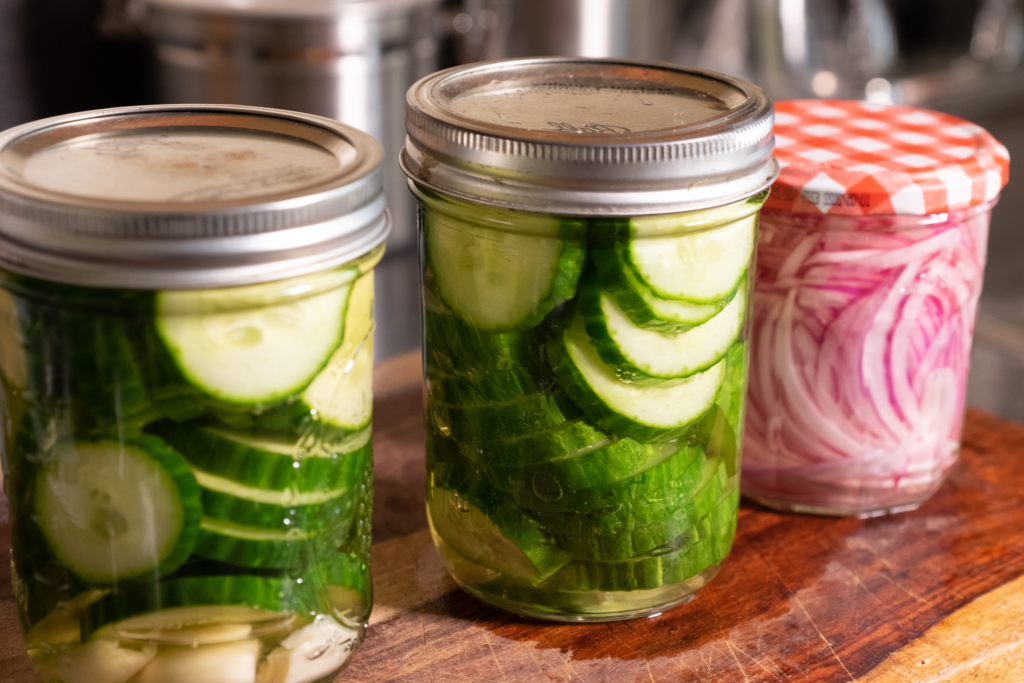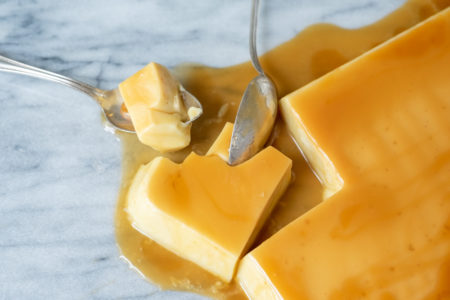A cold pickle is one of life’s simple delights. It is especially nice when it’s found alongside slabs of fatty meats and white bread. Offering texture, acidity, and sometimes sweetness, we would be remiss if we didn’t include a guide to quick pickling and all the pleasures it offers.
Hello, Pickles.
Pickles have been a culinary staple for centuries. There are stories of Cleopatra craving them and how they made the voyage across the Atlantic Ocean with some of the first immigrants to North America—securing the pickle’s place as a part of American food history.
Importantly, there are many ways to “pickle” something. Pickling, in its simplest form, is a means of preserving food, reducing waste and combatting decay. It also happens that preserving makes some things even more delicious than they would be normally.
Pickling vs. Fermentation vs. Canning
Pickles are often conflated with cucumbers and the salty, sour spears that come with your deli sandwich or on your favorite burger. These cucumbers have been pickled via fermentation.
Fermentation is the process of preserving food with good bacteria. Placing a cucumber in a brine away from oxygen allows good bacteria—specifically Lactobacillus—to grow, thereby creating the specific taste we often think of with pickles. In honor of this specific bacteria, fermented cucumbers are officially called lacto-fermented.
Another differentiator in pickling is time. Fermentation happens over longer durations in order to let the lacto-fermentation occur. The bacteria needs time to multiply and develop its unique taste, which is why we often see pickles canned in jars—to keep oxygen out. Canning is also a means of extending the already extended lifespan of the pickles and the vegetable itself. So imagine a bunch of sailors in the 16th century making their way across the Atlantic. Good preservation was key.
But not all pickles need bacteria and time to create their unique taste. Another, faster way to pickle is to use an acid, water, and salt—a technique commonly referred to as a “quick pickle.” A brine is created by dissolving salt in equal parts acid (such as vinegar or lemon juice) and water. This mixture is then heated to a boil and poured over the vegetable, which accomplishes a quick cooking of the vegetable, which resembles the decomposition of the vegetable from fermentation.
While fermentation requires fewer ingredients and equipment, quick pickling has become a favorite on the food scene. Quick pickling allows easier reproduction of taste and a minimized chance of growing harmful bacteria when canning or storage is not done properly. By boiling the pickling liquid beforehand, you are effectively going to kill any harmful bacteria that want to grow. Storage of quick pickles is also easier: as long as all the vegetables are submerged in the pickling liquid and then stored in the fridge, there is virtually no risk of spoilage.
In the current day and age, pickles at food establishments are more frequently “quick pickled” because of all these benefits. So the pickled cucumbers accompanying the brisket at your local BBQ spot were most likely made that day, rather than weeks ago.
How to Quick Pickle
Quick pickling requires just five ingredients, but it can take on a multitude of flavors. Feel free to add whole spices like mustard seeds, black peppercorns, caraway or fennel seeds, crushed red pepper flakes, and more to customize your pickles to your taste.
The most common pickling liquid ratio is 3-2-1: 3 cups of water to 2 cups of vinegar to 1 cup of sugar, with a liberal use of salt. Remember that not all vinegar is created equal; regular distilled white vinegar will be more acidic than a rice or apple cider vinegar. The key is to dissolve all of your ingredients together, taste, then adjust. We prefer a very sharp pickling liquid but also like a rice vinegar variation, as it tends to have the sweetest tasting profile of readily available vinegars.
Recipe for Quick Pickle
| servings | Active Time | Total Cook Time |
| 4 | 20 minutes | 30 minutes |
Ingredients
½ lb thinly sliced cucumbers
2 cups rice vinegar
1 cup water
1 cup white sugar
⅓ cup salt
PREPARATION
1) Slice cucumbers and layer gently into a glass jar that has a tight fitting lid.
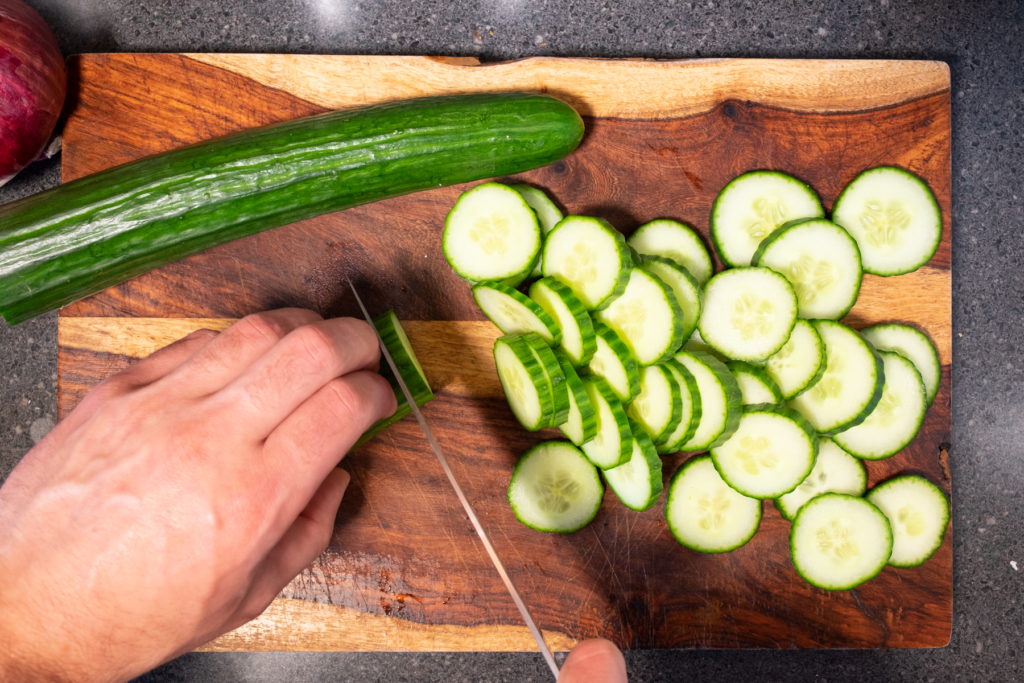
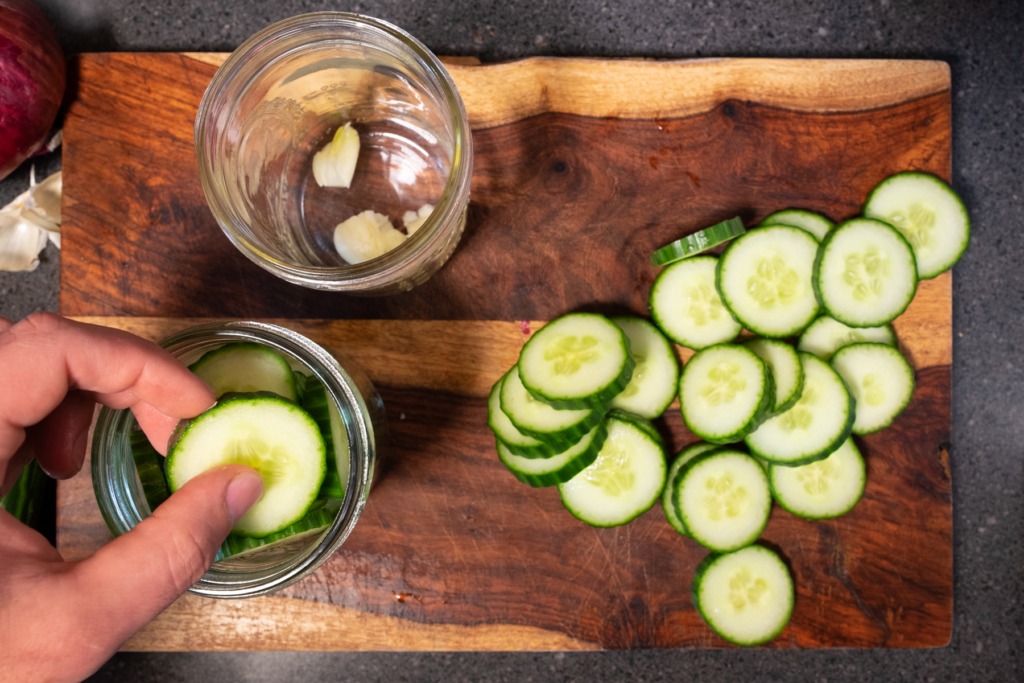
2) Combine vinegar, water, sugar, and salt in a small saucepan and place over medium-high heat, stirring every 2 minutes to ensure that no sugar is stuck on the bottom of the pan.
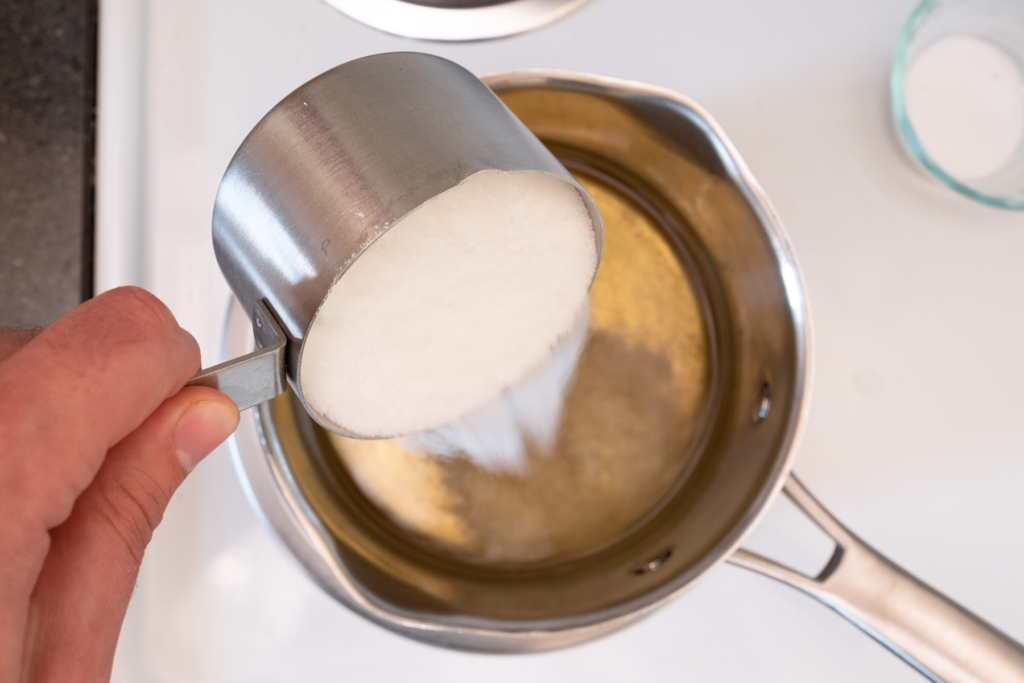
3) Once the mixture has boiled, give one more stir, so everything is dissolved.
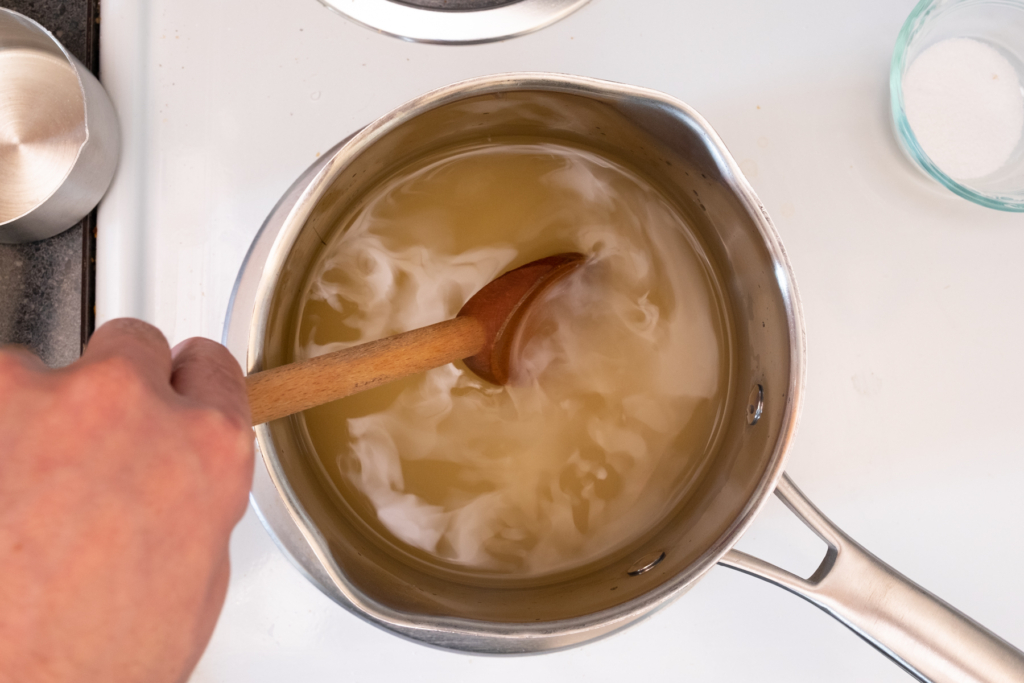
4) Turn off the heat and carefully pour the liquid over the cucumbers in their jar until the cucumber slices are completely submerged.

5) Place the tight fitting lid on the glass jar and let the mixture come to room temperature over the next few hours.
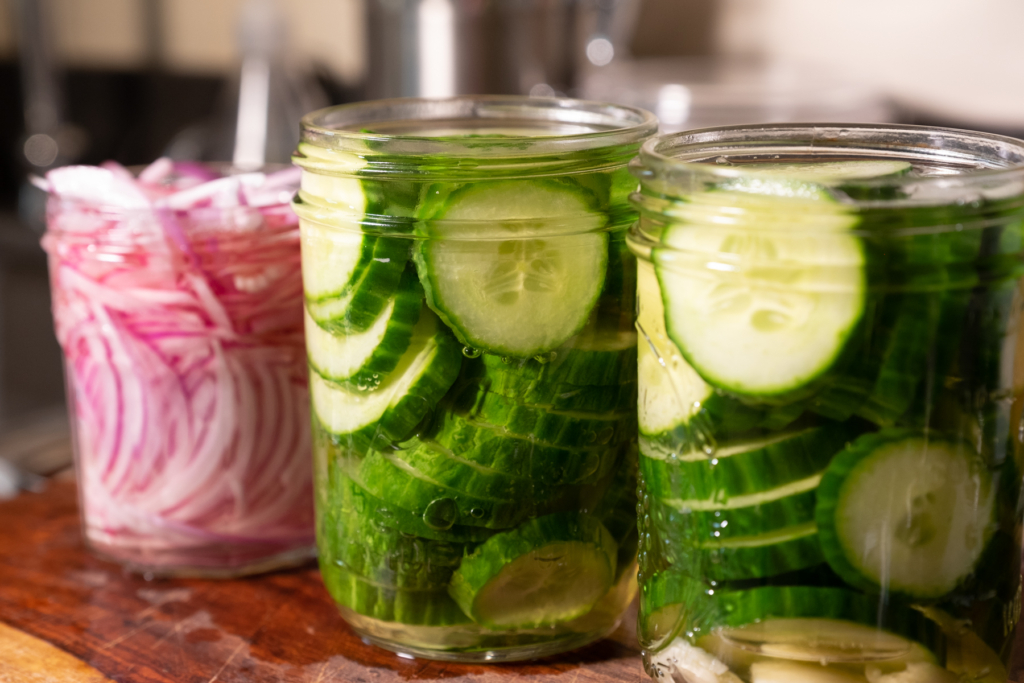
6) Once at room temperature, serve immediately or store in your fridge for up to 2 months.
